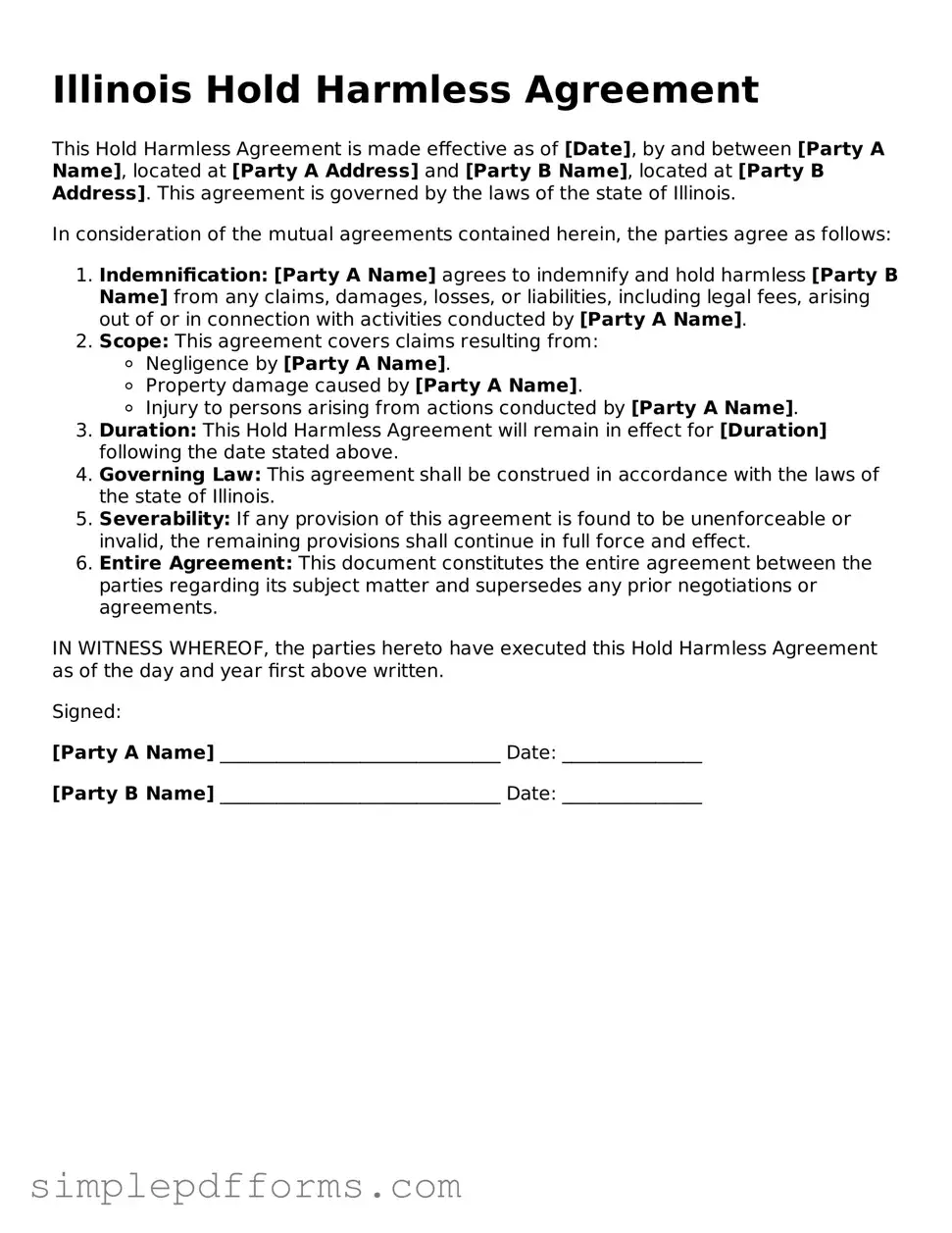Illinois Hold Harmless Agreement
This Hold Harmless Agreement is made effective as of [Date], by and between [Party A Name], located at [Party A Address] and [Party B Name], located at [Party B Address]. This agreement is governed by the laws of the state of Illinois.
In consideration of the mutual agreements contained herein, the parties agree as follows:
- Indemnification: [Party A Name] agrees to indemnify and hold harmless [Party B Name] from any claims, damages, losses, or liabilities, including legal fees, arising out of or in connection with activities conducted by [Party A Name].
- Scope: This agreement covers claims resulting from:
- Negligence by [Party A Name].
- Property damage caused by [Party A Name].
- Injury to persons arising from actions conducted by [Party A Name].
- Duration: This Hold Harmless Agreement will remain in effect for [Duration] following the date stated above.
- Governing Law: This agreement shall be construed in accordance with the laws of the state of Illinois.
- Severability: If any provision of this agreement is found to be unenforceable or invalid, the remaining provisions shall continue in full force and effect.
- Entire Agreement: This document constitutes the entire agreement between the parties regarding its subject matter and supersedes any prior negotiations or agreements.
IN WITNESS WHEREOF, the parties hereto have executed this Hold Harmless Agreement as of the day and year first above written.
Signed:
[Party A Name] ______________________________ Date: _______________
[Party B Name] ______________________________ Date: _______________
